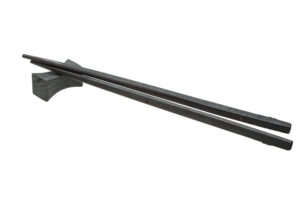In the realm of bedding, few items boast as storied a history and as much cultural significance as the Japanese futon. Far more than just a simple mattress, the futon represents a legacy of traditional Japanese living, ingeniously designed to harmonize with minimalistic spaces and a testament to the adaptability of cultural artifacts in a fast-paced world. From its humble beginnings to its status as a global household staple, the evolution of the futon is a fascinating journey through time, innovation, and cultural exchange. This article delves into the multi-faceted history of the futon, exploring its origins, its transformation through the ages, and its place in both Japanese homes and those around the world today.
The Dawn of the Futon: A Cultural Bedrock
The futon’s story begins in Japan’s ancient past, where it emerged as a practical solution to the demands of limited living space and the need for multifunctional furniture. Originally, futons were filled with soft materials like cotton, wool, or horsehair, offering a sleeping surface that could be easily rolled up and stored away during the day. This not only maximized the utility of living spaces but also embodied the Japanese aesthetic of simplicity and functionality. The earliest futons were a far cry from the thick, plush mattresses we see today, but they laid the foundation for a bedding tradition that would endure for centuries.
From Cotton to Modern: The Futon’s Fabric Journey
Over time, the materials and construction of the futon evolved. Cotton became the preferred filling, prized for its comfort, breathability, and affordability. The advent of industrial cotton processing in the 19th century made futons more accessible to the general public, marking a significant shift in their popularity and usage. As technology advanced, synthetic fabrics and memory foam began to be incorporated, offering new levels of comfort and convenience without straying far from the futon’s minimalist roots. Despite these modern enhancements, the essence of the futon remained unchanged, serving as a bridge between tradition and innovation.
Sleeping on the Ground: The Original Comfort
One of the defining characteristics of the futon is its placement directly on the floor, a practice that aligns with traditional Japanese views on simplicity and health. Sleeping on the ground was believed to offer numerous benefits, including improved posture and circulation. The tatami mat, another staple of Japanese homes, provided the perfect complement to the futon, offering a soft, breathable surface that enhanced the sleeper’s comfort. This arrangement reflects a deep understanding of living in harmony with one’s environment, prioritizing well-being and spatial efficiency over ornate furnishings.
The Futon’s Journey West: A Cultural Exchange
The futon’s journey to the Western world began in the latter half of the 20th century, fueled by a growing interest in Japanese culture and an appetite for versatile furniture. In America and Europe, the futon was embraced as a symbol of minimalist living, appealing to students, city dwellers, and anyone looking to make efficient use of limited space. The Western futon underwent its own evolution, with designs incorporating frames that allowed it to double as a couch. This adaptation sparked a surge in popularity, transforming the futon from a cultural novelty into a mainstream furniture choice.
Innovation in Sleep: The Futon Enters the Market
As the futon’s popularity grew, manufacturers began to experiment with designs, materials, and construction techniques. The market saw the introduction of luxury futons, eco-friendly options, and models designed for specific health benefits. Innovations such as foldable frames and portable designs catered to the demands of modern living, further cementing the futon’s place in the global furniture market. Today, the futon is celebrated not only for its practicality and comfort but also as a canvas for design innovation, offering consumers a wide range of options to suit their lifestyle and aesthetic preferences.
Space-Saving Design: Why Futons Became Popular
The futon’s popularity can be largely attributed to its space-saving design. In Japan, where living spaces are often compact, the ability to store the bedding during the day and repurpose the room is invaluable. This principle resonated globally, particularly in urban environments where square footage comes at a premium. The futon’s versatility and simplicity offered a solution to the perennial challenge of space, proving that functionality need not come at the expense of comfort or style. As the world becomes increasingly urbanized, the futon’s appeal continues to grow, offering a smart solution for modern living.
The Futon in Modern Japan: Tradition Meets Innovation
In contemporary Japan, the futon remains an enduring symbol of traditional culture, even as it evolves to meet the demands of modern life. Innovations in materials and manufacturing have led to lighter, more compact designs that are easier to fold and store, catering to the needs of today’s Japanese households. At the same time, the futon’s core values of simplicity, health, and space efficiency continue to resonate, bridging the gap between Japan’s rich heritage and its dynamic present. Whether in a minimalist Tokyo apartment or a rural home, the futon stands as a testament to the enduring appeal of Japanese design principles.
Beyond Borders: The Global Reach of Japanese Futons
The Japanese futon has transcended its origins to become a global phenomenon, embraced by cultures around the world for its unique blend of comfort, simplicity, and versatility. From Europe to North America and beyond, the futon has been adapted to suit a wide range of living spaces and lifestyles, reflecting the universal human desire for restful sleep and efficient use of space. Its global journey is a remarkable example of cultural exchange, demonstrating how a traditional Japanese item can find a place in the hearts and homes of people from vastly different backgrounds.
The Eco-Friendly Aspect of Futons: A Green Choice
One of the less heralded but increasingly important aspects of the futon’s appeal is its eco-friendliness. Traditional futons, made with natural materials like cotton and wool, offer a sustainable alternative to synthetic mattresses, which can contain harmful chemicals and take centuries to decompose. The futon’s compact design and longevity further minimize its environmental impact, aligning with growing consumer interest in sustainable living choices. As environmental awareness grows, the futon stands out as a green choice in bedding, combining ecological responsibility with comfort and style.
The Art of Folding: Preserving Space and Tradition
The practice of folding and storing the futon each morning is more than a space-saving measure; it is a ritual that embodies the Japanese principles of order, respect, and mindfulness. This daily routine encourages cleanliness, discipline, and an appreciation for one’s living space, reflecting a broader cultural emphasis on harmony and balance. The art of folding the futon, passed down through generations, remains a poignant reminder of the importance of simplicity and intention in our lives.
Futons in Contemporary Decor: A Stylish Revival
In recent years, the futon has experienced a stylish revival, emerging as a coveted item in contemporary interior design. Designers and homeowners alike are drawn to its clean lines, versatility, and the way it effortlessly blends functionality with aesthetic appeal. The modern futon is available in a variety of colors, patterns, and textures, allowing it to serve as a focal point in minimalist designs or a complementary piece in more eclectic decors. This resurgence underscores the futon’s timeless appeal and its ability to adapt to changing tastes and trends.
The Future of Futons: Trends and Innovations
Looking ahead, the future of the futon appears bright, fueled by ongoing innovations in design, materials, and functionality. Emerging trends suggest a continued emphasis on sustainability, with a growing interest in organic and recycled materials. Smart technology, including adjustable firmness and integrated sleep tracking, may also play a role in the evolution of the futon, offering a high-tech twist on traditional comfort. As global appreciation for the futon’s blend of simplicity, health, and versatility grows, it is poised to remain a beloved staple of home furnishings, demonstrating the enduring power of Japanese design and innovation.
The journey of the futon from a simple Japanese bedding option to a global furniture phenomenon encapsulates the extraordinary ability of a cultural artifact to adapt, evolve, and resonate across different eras and societies. Its story is one of innovation, sustainability, and the enduring appeal of minimalist design. As we look to the future, the futon stands as a symbol of the seamless integration of tradition and modernity, offering lessons in simplicity, efficiency, and environmental stewardship that are more relevant than ever. In homes around the world, the futon continues to offer a unique blend of comfort, style, and practicality, proving that the best ideas often lie in the most humble of forms.





